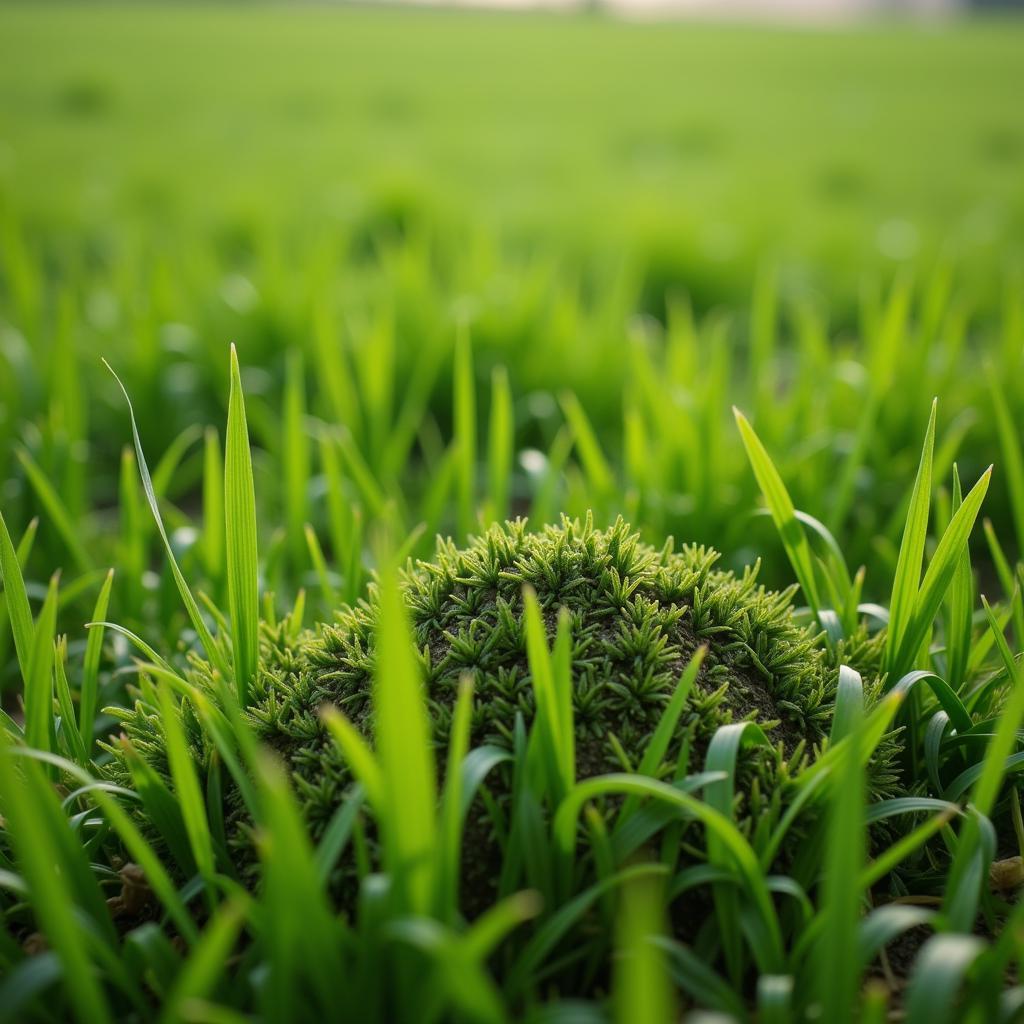Tall fescue is a popular cool-season grass known for its hardiness and adaptability. However, not all tall fescue varieties are created equal. One crucial distinction lies in the presence or absence of endophytes, naturally occurring fungi that live within the plant. While endophytes can offer certain benefits, they can also negatively impact livestock and, in some cases, humans. This guide delves into the world of Endophyte-free Tall Fescue, exploring its benefits, drawbacks, and applications.
Understanding Endophytes and Their Impact
Endophytes are fungi that form a symbiotic relationship with tall fescue and other grasses. While some endophytes are beneficial, the type commonly found in tall fescue, called Epichloë coenophiala, produces alkaloids that can be detrimental to grazing animals. These alkaloids can cause a range of health issues in livestock, including:
- Reduced weight gain
- Heat stress
- Poor reproductive performance
- Fescue foot (a circulatory disorder)
These problems can lead to significant economic losses for livestock producers.
The Benefits of Endophyte-Free Tall Fescue
Choosing endophyte-free tall fescue varieties offers several key advantages:
- Improved Animal Performance: Without the detrimental alkaloids, livestock grazing on endophyte-free tall fescue experience better weight gain, improved reproductive health, and reduced risk of fescue-related illnesses.
- Enhanced Palatability: Endophyte-free tall fescue is generally more palatable to livestock than endophyte-infected varieties, leading to increased forage intake.
- Reduced Environmental Concerns: Endophytes can impact wildlife populations as well. Opting for endophyte-free varieties minimizes potential harm to beneficial insects and other wildlife.
 Healthy Livestock on Endophyte-Free Pasture
Healthy Livestock on Endophyte-Free Pasture
Considerations for Endophyte-Free Tall Fescue Management
While endophyte-free tall fescue offers significant benefits, successful establishment and management require some specific considerations:
- Establishment: Endophyte-free varieties may require more careful planting and establishment practices compared to their endophyte-infected counterparts.
- Weed Control: Endophytes can provide some degree of weed suppression. Without them, effective weed management strategies become even more critical.
- Seed Source: It’s crucial to source certified endophyte-free seed from reputable dealers to ensure the variety is truly endophyte-free.
Applications of Endophyte-Free Tall Fescue
Endophyte-free tall fescue proves valuable in various applications, including:
- Pastures for Sensitive Livestock: Horse owners, in particular, often choose endophyte-free varieties due to the high sensitivity of horses to endophyte alkaloids.
- Hay Production: Endophyte-free tall fescue produces high-quality hay that is safe and nutritious for livestock.
- Home Lawns and Turf: For homeowners concerned about children and pets, endophyte-free tall fescue offers a safer, more environmentally friendly option.
 Close-Up of Endophyte-Free Tall Fescue Seed
Close-Up of Endophyte-Free Tall Fescue Seed
Making the Right Choice: Endophyte-Free or Endophyte-Infected?
The decision to plant endophyte-free or endophyte-infected tall fescue depends on several factors, including:
- Intended Use: If the primary use is for livestock grazing, especially sensitive species like horses, endophyte-free varieties are highly recommended.
- Management Practices: Producers willing to invest in careful establishment and weed control practices may find endophyte-free varieties more manageable.
- Environmental Concerns: Choosing endophyte-free varieties aligns with environmentally conscious practices by minimizing potential risks to wildlife.
Conclusion
Endophyte-free tall fescue presents a valuable option for livestock producers, homeowners, and turf managers. By understanding the implications of endophytes and the benefits of going endophyte-free, individuals can make informed decisions that prioritize the health of their animals, the environment, and the overall sustainability of their land management practices.
FAQs
Q: Are all endophytes harmful?
A: No, not all endophytes are harmful. Some endophytes can benefit plants by increasing their resistance to drought, pests, and diseases. However, the specific endophyte (Epichloë coenophiala) commonly found in tall fescue produces harmful alkaloids.
Q: Can endophytes be removed from tall fescue?
A: While there are methods to suppress endophyte growth, completely removing them from an infected stand of tall fescue is extremely difficult. The most effective approach is to start with certified endophyte-free seed.
Q: How can I tell if my tall fescue is endophyte-free?
A: Visual inspection cannot determine the presence or absence of endophytes. The only reliable method is to have a sample of the grass tested by a laboratory.
Q: Where can I purchase endophyte-free tall fescue seed?
A: Certified endophyte-free tall fescue seed can be purchased from reputable seed suppliers and agricultural retailers.
Q: Is endophyte-free tall fescue suitable for all climates?
A: Tall fescue, in general, is a cool-season grass that thrives in temperate climates. The specific adaptability of endophyte-free varieties may vary, so it’s best to choose varieties well-suited to your region.
Need more information on gluten-free options? Explore our articles on Kim’s Gluten Free Bread Flour Blend, Kim’s Gluten Free Flour Blend, or find delicious recipes like Gluten Free Kringle, Gluten Free Cannoli Cake, and Gluten Free Spoon Bread.
For personalized guidance on choosing the right type of grass for your needs, contact our experts at 0972669017, email us at [email protected], or visit us at 142 Trần Nhân Tông, Yên Thanh, Uông Bí, Quảng Ninh, Vietnam. We offer 24/7 customer support to assist you.